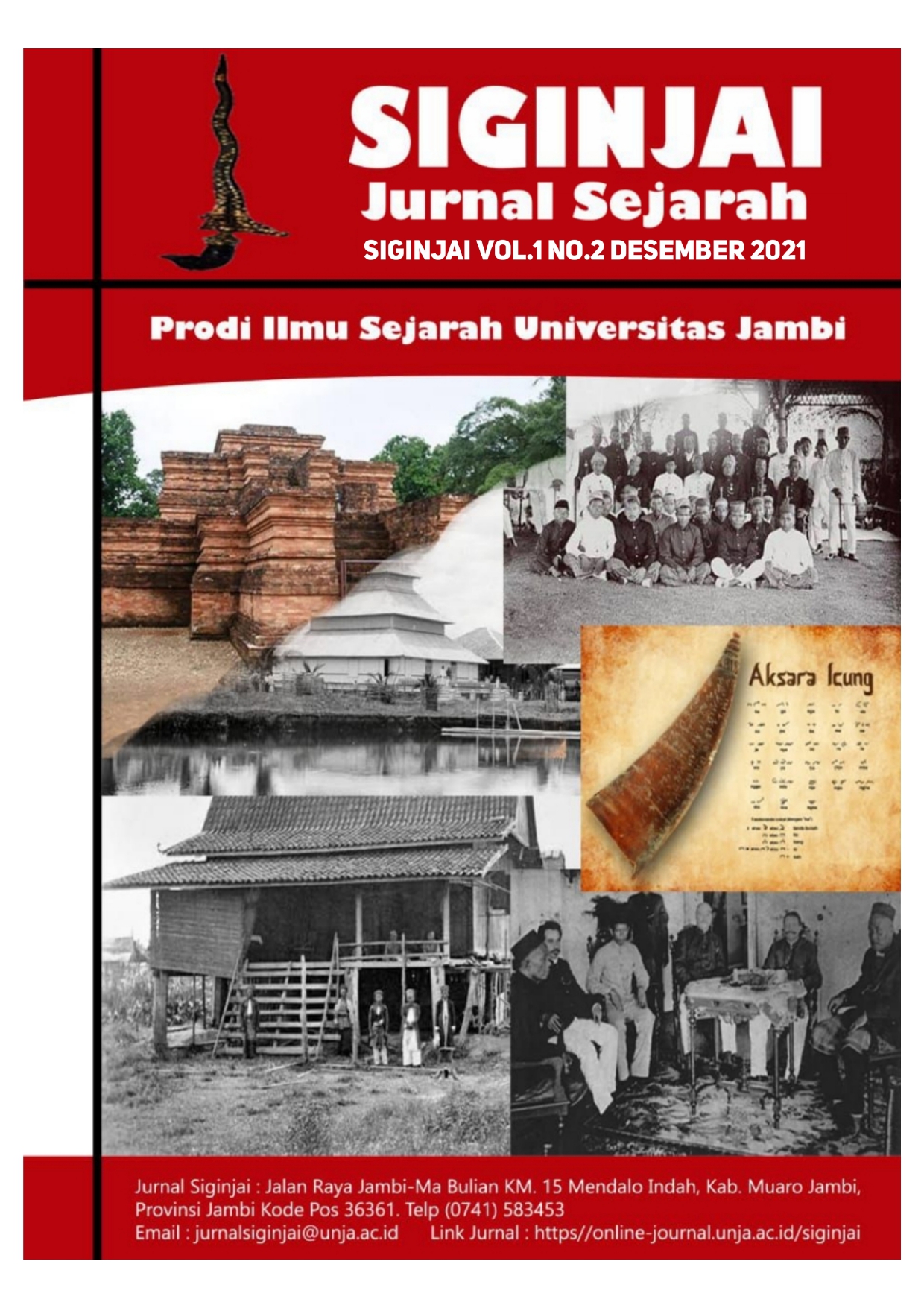Perkembangan Lembaga Pendidikan Islam di Jambi Abad XX: Studi Kasus Seberang Kota Jambi
DOI:
https://doi.org/10.22437/js.v1i2.16348Keywords:
Development, Islamic Educational Institutions, Madrasah, PesantrenAbstract
The development of Islamic education in Jambi, the establishment of the White Langgar by Sheikh Khotib Mas'ud in 1868, then continued with the association of alumni scholars of alMadrasty Shalatiyah and the Darul Ulum madrasa in Mecca which began to build a learning place called maktab (kuttab house) and madrasas called with a reed madrasa because it was built with materials from bamboo. The early madrasas that were established and eventually became the parent for the madrasas in Jambi included the Sa'adatuddarein madrasa in Tahtulyaman village which was led by Sheikh Ahmad bin Abdul Syakur; the Nurul Islam madrasa in Tanjung Pasir led by H. Kemas Muhammad Soleh bin H. Kemas Muhammad Yasin; the Nurul Iman madrasa in Ulu Gedong led by H. Ibrahim bin Sheikh A. Majid; and Madrasah Al-Jauharen in Sungai Asam Darat village (Kampung Manggis, Jambi city now) which is led by H. Usman bin H. Ali. Islamic education then experienced developments starting after the organizational scholars realized the Tsamaratul Insan Association in 1915. The existence of Islamic educational institutions has a role in building the nation, especially the Jambi Malay State where the knowledge developed is equivalent and relevant to the civilization that continues to develop from time to time. The writing of this paper uses historical methods consisting of heuristics (collection of sources), source criticism, interpretation (interpretation), and historiography (writing).
















